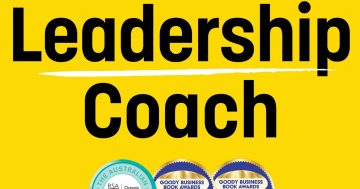Michelle Gibbings* says as it’s a given that learning is a life-long process so it’s best you take charge of how you do it.
 The world is always full of surprises — some we want, and some we don’t.
The world is always full of surprises — some we want, and some we don’t.
No matter how we categorise the change, what can help us navigate our way through are our skills and competencies.
These evolve and develop as your career progresses, and what’s needed shifts as the external environment changes.
Consequently, the process of gaining skills, improving skills, and adapting skills never stops.
It can feel comfortable to sit back and wait for someone to manage this process for you.
However, to be ready for the present and equipped to adapt as the future changes, it’s far better if you take charge of this process.
So where do you start? How do you create a personal learning environment?
Self-development experts and authors, David Peterson and Mary Dee Hicks have created a process they title the Development Pipeline.
It’s a model which outlines the five critical requirements for learning and development to take place.
These are insight, motivation, skill development, real-world practice and accountability.
Insight:
Take time to review — in detail — the skills and competencies you have now, and what’s needed for the future.
This step is not only about identifying the potential gaps, but considering how best to close those gaps.
Motivation:
How motivated are you? How willing are you to invest your time and energy into developing yourself and your skills?
It’s your career and your future.
Research proves we learn more rapidly when we see the learning as relevant, and we’ve made a choice to learn.
Now is a perfect opportunity to set aside some time to learn more.
Consider learning that you are interested in, as well as learning that challenges you to think differently.
Skill development:
Once you’ve identified what you want to learn, seek out the opportunity to acquire and develop those skills.
Your growth can be through reading, short courses, online discussion forums and a range of other outlets.
Look for opportunities to learn broadly and deeply.
Real-world practice:
The next element is to find opportunities to practice and embed your learning.
This can be through on-the-job practice, volunteering, conducting an online demonstration or practising with a friend or colleague.
Find and seize any chance you can to practice, practice, practice!
Accountability:
The final element focuses on you taking responsibility for your learning.
Ask yourself: Are you internalising the new capabilities and embedding them into your daily habits and practices?
Are you using them to improve outcomes and results — for you, your colleagues and your organisation?
Consider the benefits that are flowing from your new learning and how you are best leveraging them.
Author, Ralph Waldo Emerson once said this: “That which we persist in doing becomes easier for us to do; not that the nature of the thing itself is changed, but that our power to do is increased.”
That’s what happens when your learning is embedded.
*Michelle Gibbings is a change leadership and career expert and founder of Change Meridian. She works with leaders and teams to help them get fit for the future of work. She can be contacted at [email protected].
This article first appeared at www.changemeridian.com.au











